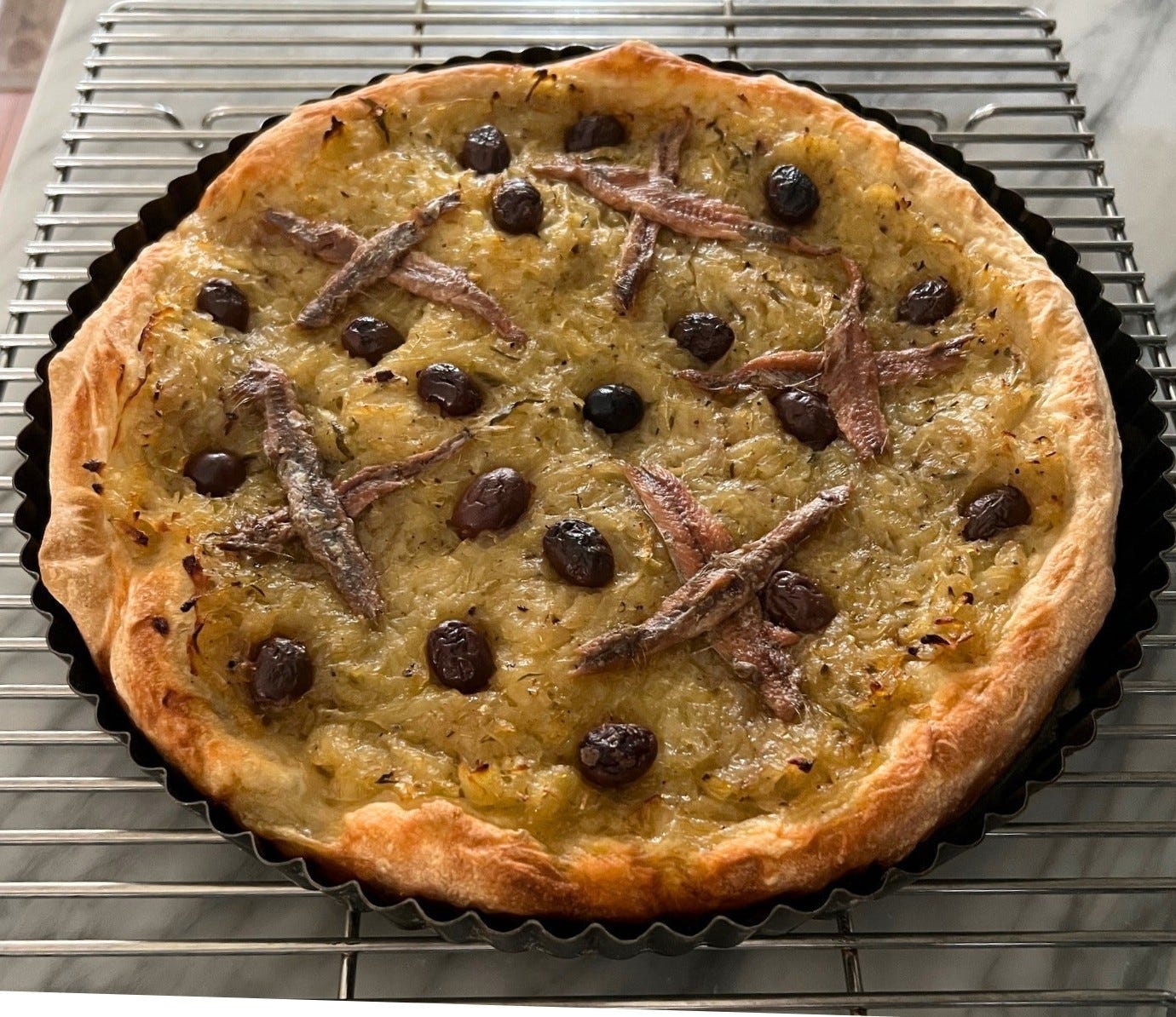THE PROVENÇAL ONION TART pissaladière is common at markets and bakeries from Nice to Marseille, at least. From the time I first heard of it — with its anchovies and olives — it loomed in my mind as an important food of Provence, but I didn’t pursue it because I tripped over the pissalat, the fermented fish condiment that gives the tart its name. Anchovies seemed to have completely taken its place, and it wasn’t clear to me that pissalat was still being made. (I realize now that it was and is in a small way, and a little is for sale.) I decided not to ferment my own, and I still haven’t tasted it. I assumed the anchovies were a substitute and didn’t belong.
Now that I’m considering pissaladière at last, I discover that anchovies and pissalat appear together in the earliest recipe I know — in 150 Ways to Prepare Sardines (150 Maniéres d’Accommoder les Sardines), published in 1898. It’s the only book that the chef Apollon Caillat wrote, but he contributed recipes to Escoffier’s Guide Culinaire, including the one for bouillabaisse, and Escoffier called him “one of the most respected practitioners of our time.” To make tourte au pissalat, as Caillat called it: “Take ordinary bread dough, stretch it to a thickness of one or two centimeters, and put it in a tourtière or on a tin plaque, pinching up the edges. Cover the surface with anchovy filets arranged in Xs, scatter with sliced onions and black olives, sprinkle with good olive oil mixed with pissalat, and bake in a moderate oven until well-colored.” I assume that Caillat meant onions that were already cooked, as they always are for pissaladière. Other early recipes also call for bread dough, which could be bought from a baker. The bread shows that pissaladière was a street food or home food, not produced in a restaurant. And it suggests that the anchovies, although not always present, were an option from the start.





